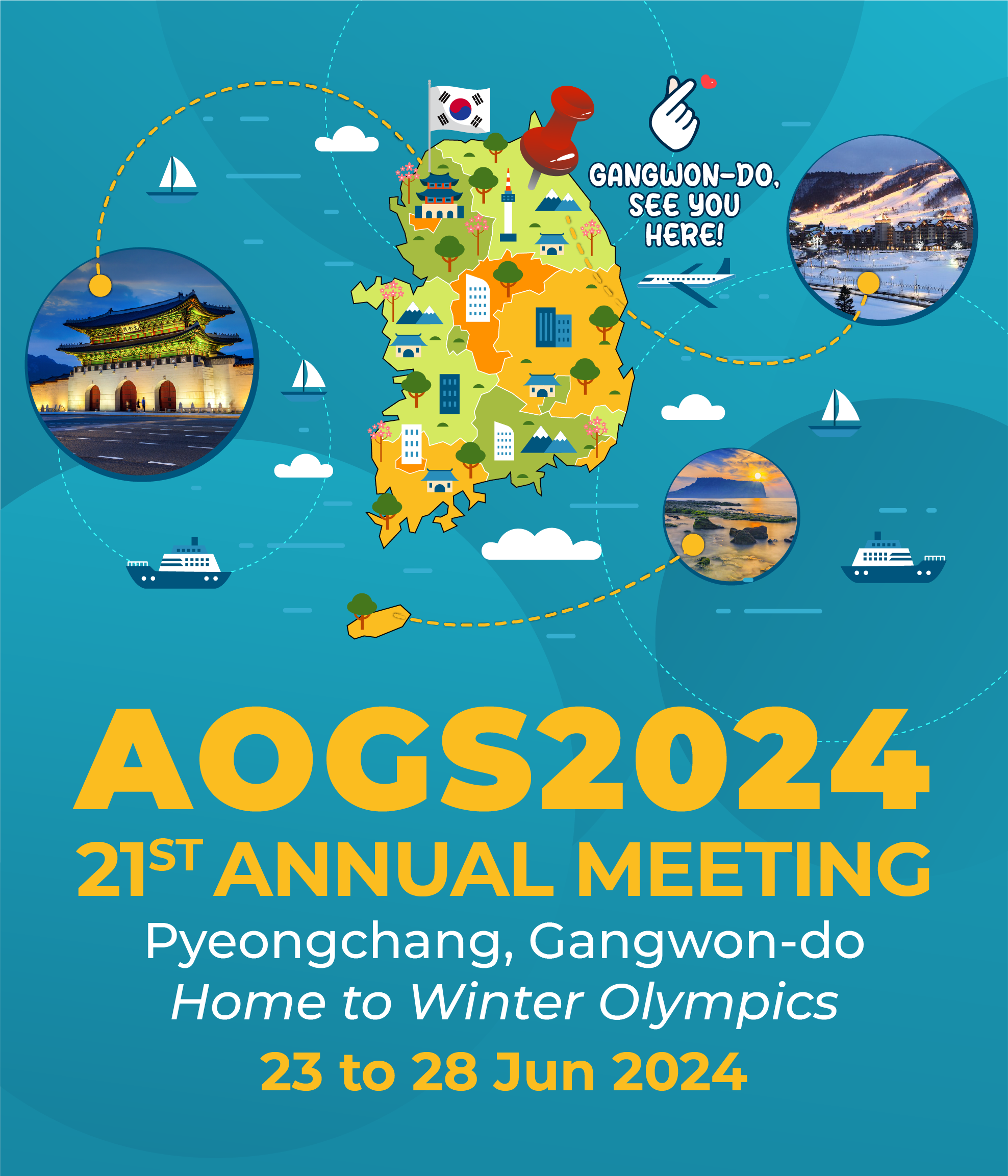
OS Distinguished Lecture | 27 Jun (Thu) 11:00 AM - 12:30 PM | Pyeongchang Hall II, Alpensia Convention Center

Jing ZHANG
Advisor to the President
Faculty of Science
University of Toyama
Jing Zhang is a sea-going chemical oceanographer, an environmental geochemist and professor at the University of Toyama. She received a MSc and PhD from the University of Tokyo and did her postgraduate work at the National Institute of Radiological Sciences. She moved to the University of Toyama in 1998 and has been a professor since 2008. Zhang’s research seeks to clarify the origins of materials in the hydrosphere, their distributions and circulation mechanisms, and the links with global environmental changes, by analyzing trace elements and isotopic compositions. She studies the transport and interaction between the marginal seas and the open ocean; submarine groundwater discharge and shallow hydrothermal systems; oceanic circulation and variation related to global climate changes; origins and long-term transportation of anthropogenic materials; and the formation mechanisms of chemical synthesis communities, such as bacterial-mats and methane flux in cold seep and gas/oil seep areas. She received the Environmental Science Prize of the Oceanographic Society of Japan in 2018, and the Oceanochemistry Award in 2020. At present, she is a member of the Science Council of Japan, and a director in the Northwest Pacific Region Environmental Cooperation Center. She is a councilor of the Geochemical Society of Japan and the Oceanographic Society of Japan.
She has served many international scientific societies in many capacities, such as a vice president of SCOR (Scientific Committee on Oceanic Research, 2018-2022), serving on the Science Steering Committee (2006-2011) and the Data Management Committee (~2017) for GEOTRACES program; and the F.W. Clarke Award Committee and the Nominations Committee of the Geochemical Society. She also served as a chair of the twelve-country Working Group (2017-2021) established by the IOC Sub-Commission for the Western Pacific (WESTPAC) in 2017, and now is leading a ten-year ongoing programme (2021-2030), “Healthy, Productive and Sustainable Asian Marginal Seas”.
Understanding the Water and Nutrient Transport Between Land and Ocean: Toward the Healthy, Productive, and Sustainable Asian Marginal Seas
Given the unrelenting advance of climate change, significant changes in the hydrological and biogeochemical cycles, together with increasing human economic activities, are affecting the ocean structure and ecosystem in the Asia Marginal seas. In addition, oceanographic physical conditions, such as stratification, vertical mixing and horizonal transport, are important in controlling the behavior of nutrients. Here, current studies focusing on the material transfer between land and ocean and the influence by global warming will be introduced.
As one of the western boundary currents, the Kuroshio with its nutrient-rich subsurface water plays a crucial role in carbon circulation, shaped by topography and ocean mixing processes. Recent studies reveal how the Kuroshio impacts marginal seas, uplift off the East China Sea shelf brings nutrient-rich Kuroshio water to shallower depths, fueling primary production and leading to offshore algal blooms. Chemical tracers as developed by the GEOTRACES program and its related studies are excellent tools to identify and quantify water masses mixing and material sources at different spatial and temporal scales, such as in the Kuroshio. In this presentation, we review: i) the dominant sources and supply ratio of nutrients by water masses cross shelf as well as their seasonal difference, using tracers of radium isotopes, rare earth elements, neodymium isotope, etc.; ii) 137Cs as a tracer highlights Kuroshio transport, with source Kuroshio water at 400 m observed at 150 m in the East China Sea. Moreover, this nutrient-rich water continues downstream, turning the Kuroshio into a material conveyor belt, boosting primary production, exemplified by the thriving fishing grounds east of Japan. In this discussion we emphasize that all these data have gone through the calibration and comparison between different labs/cruises, ensuring its accuracy and reliability.
An ongoing UN Ocean Decade Incubator-WESTPAC programme, "Healthy, Productive and Sustainable Asian Marginal Seas: Understanding changes in the marine environment in response to global climate change", will also be briefly introduced in this talk.
The global warming effects have also begun to appear in the weather and the water cycle of some coastal cities. The temperature in Japan has been rising 1.7 times faster than the world's average due to ongoing global warming. The rise in temperature has turned snowfall into rainfall, and as a result, the amount of snowfall in these areas has decreased by up to 50% over the past 40 years. The reduction in the snowfall caused a deterioration in the function of water storage and groundwater recharge. These shifts are expected to increase river water and shallow groundwater volume and a shortened residence time before flowing to the coastal ocean, eventually decreasing nutrient concentrations in the terrestrial water. To adapt to the continuing global warming, it is vital to understand the status of the water and nutrient dynamics in this area and then adopt appropriate measures based on scientific evidence in cooperation with the government. A three-year ongoing project (Environment Research and Technology Development Fund) will also be introduced, with the goal to lead to conserve sustainable water and implement appropriate nutrient management.
